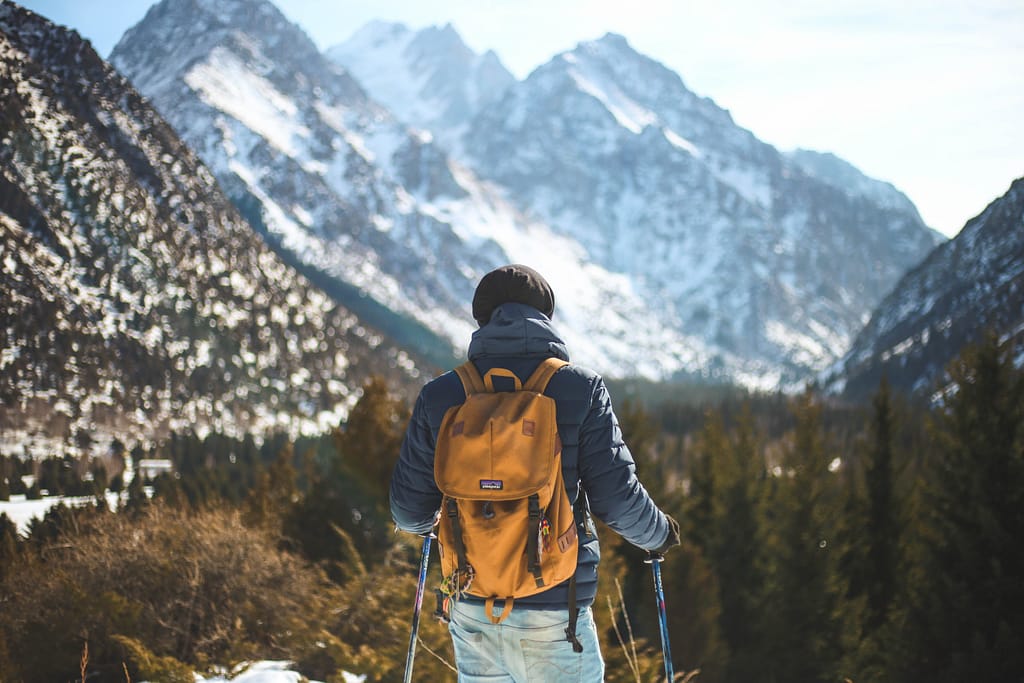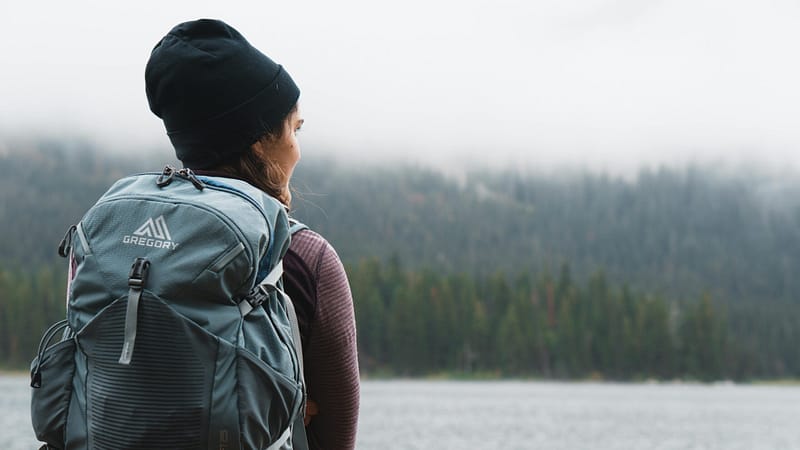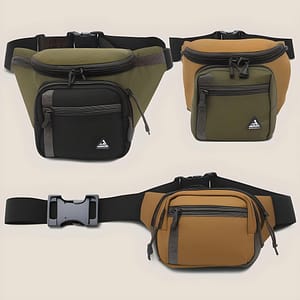Winter hiking can be a thrilling adventure, but it’s important to have the right gear to stay warm and safe. From insulated jackets to sturdy boots, investing in quality winter hiking gear is a must for all adventurous souls.
What should I wear for winter hiking?
Winter hiking is like stepping into a snowy adventure wonderland, but navigating the frosty trails requires the right gear to keep you warm, dry, and ready for anything. First things first – let’s talk about those boots. Winter demands something sturdy, waterproof, and insulated. Think of them as your trusty sidekick, braving the icy paths alongside you.
Layers
Layers, my friend, layers. Winter weather is as unpredictable as a cat with a laser pointer, so you need to be prepared. Base layer, mid-layer, outer layer – it’s like crafting your own warmth armor. Each layer adds a level of protection, shielding you from the biting wind and unpredictable snowflakes.
Jacket
Now, the jacket – the pièce de résistance of your winter ensemble. Find one that’s not just warm but practically screams, “I am the master of this winter realm.” Waterproof, windproof, and insulated to the point that you might consider wearing it to bed.
Headgear
Headgear is crucial. Winter winds can be relentless, so don’t underestimate the power of a good hat. It’s not just a protector of your ears; it’s a style statement. Bobble hats, animal ears, or the classic beanie – choose your headgear wisely, my friend.
Gloves
Gloves, because frostbite is not a winter accessory anyone wants. Find a pair that keeps your fingers toasty while still allowing you to snap those breathtaking snowy landscapes for your Instagram feed. Touchscreen-compatible gloves are a bonus – you don’t want to sacrifice your social media game.
Goggles
Let’s not forget the goggles – not just for blocking the glare of the snow but also for transforming you into a winter ninja. It’s like wearing a superhero mask, but with added snowflakes and adventure vibes.
Backpack
Lastly, your backpack is your partner in crime on the snowy trail. It’s not just for carrying essentials; it’s an accessory that complements your winter swagger. Find one with enough room for snacks, water, and that extra layer you’ll inevitably shed during the uphill climb.
Winter hiking is about embracing the cold with style. So, suit up, trailblazer! Let your gear speak volumes about your readiness to conquer the frozen trails and create winter memories that’ll warm your heart long after the snow has melted away.
What kind of shoes should I wear for winter hiking?
Choosing the right footwear for winter hiking is essential to ensure comfort, stability, and warmth on the icy trails. Here’s a brief guide to help you find the perfect pair:
Insulation is Key:
Go for winter hiking boots that come with insulation. Thinsulate and PrimaLoft are popular insulation materials that provide warmth without adding excessive bulk to the boots. The amount of insulation you need depends on the temperatures you’ll be facing.
Waterproofing Matters:
Winter trails can be slushy, snowy, or downright wet. Look for boots with a waterproof membrane (like Gore-Tex) to keep your feet dry. Wet and cold feet are a surefire way to suck the joy out of your winter hiking adventure.
High Ankle Support:
Choose boots with high ankle support to help prevent sprains and twists on uneven, slippery terrain. Ankle support becomes especially crucial when navigating through snow and ice.
Traction for Slippery Surfaces:
Winter trails can be slippery, so opt for boots with a reliable tread pattern. Vibram soles, lugs, and aggressive tread designs provide excellent traction on snow and ice, reducing the risk of slips and falls.
Consider a Gaiter Attachment:
Some winter boots come with a built-in gaiter attachment or a higher shaft to help keep snow out of your boots. This extra feature can be particularly useful in deep snow conditions.
Breathability:
While it’s important to keep your feet warm, it’s equally crucial to prevent them from overheating. Look for boots that offer a balance between insulation and breathability. This will help regulate temperature and reduce moisture buildup inside the boots.
Room for Socks:
Ensure that there’s enough room in your boots to accommodate thick winter socks. It’s a good idea to try on boots with the socks you plan to wear during your winter hikes to get a proper fit.
Size and Fit:
Speaking of fit, make sure your winter hiking boots are the right size. Your toes should have enough wiggle room, but the boots should also provide a snug fit to prevent blisters and ensure stability.
Test Before You Trek:
Before embarking on a lengthy winter hike, take your new boots for a shorter test hike to ensure they are comfortable and don’t cause any discomfort or rubbing. Remember, your choice of winter hiking footwear can make or break your winter adventure. Invest in a good pair of boots that suits your hiking style and the conditions you’re likely to encounter on your winter trails.

What extra gear should I bring for a winter hiking trip?
As you embark on a winter hiking trip, it’s crucial to pack additional gear to ensure your safety and comfort in the chilly wilderness. Here’s a rundown of essential extras:
Navigation Tools:
Winter landscapes can be disorienting, so bring a map, compass, and consider a GPS device to navigate through snow-covered trails.
Headlamp/Flashlight:
Days are shorter in winter, and darkness can descend swiftly. A reliable light source is essential for navigating the trails and setting up camp.
Extra Clothing Layers:
Weather conditions can change rapidly. Pack additional layers to adjust to temperature fluctuations, including a spare pair of gloves and a hat.
Emergency Shelter:
Even if you don’t plan to camp overnight, having an emergency shelter like a bivy or space blanket can be a lifesaver in unexpected situations.
First Aid Kit:
A basic first aid kit tailored for winter conditions should include items like hand warmers, blister treatment, and medications suitable for cold weather.
Multi-tool or Knife:
A versatile tool can come in handy for various tasks, from gear repair to preparing a quick trailside snack.
Nutrient-Rich Snacks:
Pack high-energy snacks to keep your body fueled in the cold. Trail mix, energy bars, and dried fruits are excellent choices.
Hydration System:
It’s easy to forget to drink water in the cold, but staying hydrated is crucial. Carry a water bottle with an insulator or an insulated hydration system.
Fire Starter Kit:
In case of an emergency, having a reliable fire starter kit – waterproof matches, a lighter, and fire-starting materials – can provide warmth and comfort.
Snowshoes or Crampons:
Depending on the snow conditions, snowshoes or crampons may be necessary for improved traction and ease of movement.
Trekking Poles:
Trekking poles offer stability on slippery terrain and can assist in navigating through deep snow.
Sunglasses or Goggles:
Protect your eyes from the glare of the snow with sunglasses or goggles. UV rays can be especially intense in snowy environments.
Sunscreen:
Sunburn is a real risk, even in winter. Apply sunscreen to exposed skin, especially on sunny days when the snow reflects sunlight.
Repair Kit:
Carry a small repair kit for quick fixes on gear, such as a patch kit for your sleeping pad or duct tape for equipment repairs.
As you venture into the winter wilderness, having these extra items in your backpack will ensure you’re well-prepared for the challenges and surprises that may come your way.
What type of backpack is best for winter hiking?
Choosing the right backpack for winter hiking is akin to finding a reliable partner for your snowy adventures. Picture it as your trustworthy companion, ready to carry the load while navigating through the winter wonderland. Look for a backpack that strikes a balance between functionality, durability, and comfort.
Consider a backpack with a robust and weather-resistant design, capable of withstanding the winter elements. Waterproof materials or integrated rain covers can be a game-changer when traversing through snow-laden trails.
Go for a size that accommodates the extra gear needed for winter excursions without being overly bulky. Adequate capacity is essential for carrying additional layers, emergency supplies, and possibly snowshoes or crampons.
Look for a backpack with accessible and strategically placed compartments. Easy-to-reach pockets allow you to grab essentials like snacks, a map, or your camera without having to dig through the entire contents.
A backpack with a hydration system sleeve or insulated compartments for water bottles is crucial in winter. Staying hydrated is just as vital in the cold as it is in the heat, and having unfrozen water at your disposal is a winter hiking luxury.
Consider a backpack with reinforced attachment points and loops. These can prove invaluable for securing items like trekking poles, ice axes, or snowshoes. Versatility in attachment options enhances the backpack’s functionality for various winter activities.
Adjustability is key for ensuring a comfortable fit, especially when layering up against the cold. Look for padded shoulder straps, a supportive hip belt, and an adjustable torso length to distribute the load effectively.
Lastly, durability is non-negotiable. Winter conditions can be tough on gear, so invest in a backpack constructed from high-quality materials and reinforced stress points. A well-built backpack is not just for one season but for many winter expeditions to come.
Remember, your choice of backpack is as personal as your favorite trail. Find one that suits your needs, fits like a dream, and can handle the challenges of winter hiking with resilience and style.

Are there any special considerations for winter hiking gear?
Embarking on a winter hiking adventure requires some thoughtful considerations when it comes to gear. Winter conditions bring unique challenges, and being well-prepared is key to a safe and enjoyable experience.
Insulation is Key:
Ensure that your clothing and footwear provide adequate insulation. Layering is essential for trapping heat close to your body. Invest in quality base layers, mid-layers, and a well-insulated jacket to stay warm.
Waterproof Everything:
Winter often means dealing with snow and slush. Make sure your outer layers, including your jacket and pants, are waterproof and seam-sealed. Waterproof boots with good insulation are a must to keep your feet dry and warm.
Protect Your Extremities:
Don’t neglect your hands, feet, and head. Invest in waterproof, insulated gloves, warm socks, and a good hat. Consider wearing a balaclava or a neck gaiter to protect your face from biting winds.
Eye Protection:
Snow can reflect sunlight intensely, leading to a condition known as snow blindness. Sunglasses with UV protection or goggles are essential to shield your eyes from glare and potential harm.
Traction Aids:
Depending on the trail conditions, you might encounter ice or packed snow. Consider carrying traction devices like microspikes or crampons to improve your stability on slippery surfaces.
Winter-Specific Backpack:
Choose a backpack that accommodates the extra gear you’ll need in winter, including layers, emergency supplies, and possibly snowshoes or crampons. Look for one with durable, weather-resistant materials.
Emergency Essentials:
Winter conditions can be unpredictable. Pack essential items like a map, compass, and a reliable GPS device. Carry an emergency shelter, such as a bivy or space blanket, in case you need to stay outdoors longer than planned.
Stay Hydrated:
Dehydration is a risk in cold weather, and it’s easy to forget to drink water when it’s cold. Use an insulated water bottle or a hydration system to prevent your water from freezing.
Check the Weather:
Winter weather can change rapidly. Stay informed about the forecast, and be prepared for sudden shifts in temperature, wind, or snowfall. Plan your route accordingly.
Stay Dry, Stay Warm:
Wet clothing is a recipe for hypothermia in winter. Bring extra layers, especially socks and gloves, and be prepared to change into dry ones if needed.
Leave No Trace:
Respect the winter environment by adhering to Leave No Trace principles. Avoid trampling on fragile vegetation, and pack out all your waste.
Remember, winter hiking can be both challenging and rewarding. Being well-prepared with the right gear ensures that you can face the cold with confidence and fully enjoy the beauty of the winter wilderness.
winter hiking gear – Conclusion
As we wrap up this exploration into the world of winter hiking gear, it’s clear that facing the frosty trails is not just about survival but about embracing the unique challenges with style and preparedness. Your winter hiking gear is more than just equipment; it’s your armor against the biting winds, your shield against the snowstorms, and your trusty sidekick on the path less traveled.
From boots that defy frosty landscapes to jackets that laugh in the face of winter, every piece of gear contributes to the narrative of your winter adventure. It’s about finding the perfect balance between staying warm and looking cool, between conquering icy peaks and making memories that will warm your heart long after the snow has melted.
So, whether you’re a seasoned snow ninja or a winter wanderer ready to embrace the frosty unknown, let your gear be an extension of your adventurous spirit. As you step into the frozen wilderness, armed with boots that could rival a Yeti and a jacket that doubles as a superhero cape, remember that winter hiking is not just a journey; it’s a celebration of resilience, a dance with the snowflakes, and a testament to the indomitable spirit of the adventurous soul.
Gear up, laugh in the face of winter, and leave your footprints in the snow-covered landscapes, for it’s in the heart of winter that true adventure begins.





